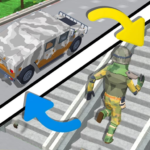Core Keeper has quickly become one of the most captivating indie sandbox experiences, combining exploration, crafting, and survival in a procedurally generated underground world. This pixel-art adventure invites users to mine resources, battle creatures, and construct bases while unveiling the mysteries beneath the earth. Whether just starting or looking to master the game’s systems, this comprehensive guide covers essential mechanics, strategies, updates, and detailed evaluations to enhance every aspect of your journey in Core Keeper.
What Is Core Keeper? Understanding Its Concept and Unique Appeal
Core Keeper is an indie sandbox adventure developed by Pugstorm and published by Fireshine Games. The game places users in the role of an ancient explorer trapped beneath the surface, tasked with navigating and uncovering the secrets of an expansive, randomly generated cave system. Gathering materials, crafting tools, and fighting hostile creatures are integral elements of the experience.
The appeal lies in the harmonious blend of exploration, survival, and crafting mechanics presented through charming pixel art. Multiplayer mode adds cooperative depth, allowing groups to face underground challenges together. Frequent updates enrich the game’s content and keep the community engaged over time.
Getting Started in Core Keeper: Essential Tips for Beginners
Beginning in Core Keeper can feel daunting due to its expansive underground environment and complex mechanics. Initial efforts should focus on gathering basic resources such as wood, stone, and food. These materials enable crafting fundamental tools like the pickaxe, which unlocks deeper and more efficient mining.
Exploring early locations helps identify the first core — a glowing artifact serving as a respawn point and central base. Managing food intake is vital to maintaining health and stamina, with harvesting mushrooms and fishing providing reliable nutrition. Constructing a simple shelter near the core protects against hostile creatures during nighttime cycles. Taking a gradual approach aids in understanding the game’s fundamentals.
Navigating and Surviving in Core Keeper’s Caves
The caves form the core of the experience, demanding careful navigation and preparation. Deeper areas feature tougher enemies and fewer resources. Adequate lighting via torches, lanterns, or glow sticks is essential to avoid ambushes in the dark.
Marking explored regions or establishing safe zones offers strategic retreats for healing and resource management. Environmental hazards such as lava pools and poisonous flora pose additional threats. Mastering combat techniques, upgrading weapons, and knowing when to withdraw increase survival chances in more challenging depths.
Crafting and Base Building: Managing Economy and Development in Core Keeper
Crafting is a cornerstone of Core Keeper’s gameplay. Players use gathered materials to create tools, equipment, and machines ranging from simple to advanced. Early crafting priorities include upgrading mining tools and building furnaces for ore processing, which accelerate progress.
Developing a functional base involves setting up storage, crafting stations, and farms to sustain food supplies. Automation elements like water wheels and pulley systems optimize resource management, freeing up time to focus on exploration and combat.
Combat Tactics in Core Keeper: Overcoming Enemies and Bosses
Core Keeper’s combat system incorporates melee, ranged, and magical attacks. Early enemies are manageable with swords or bows, but later levels introduce formidable bosses requiring advanced tactics.
Understanding enemy behaviors and timing attacks precisely proves essential. Utilizing ranged weapons to kite enemies or traps to weaken foes before engagement improves outcomes. Boss encounters typically reward rare crafting materials necessary for advancement, underscoring the importance of preparation with enhanced gear and healing items.
Cooperative Multiplayer in Core Keeper: Exploring Together
The multiplayer mode expands the experience by allowing up to eight users to explore, gather, build, and fight within a shared world. Collaboration and role specialization—such as miner, builder, or fighter—help maximize efficiency and increase success against tougher challenges.
Pooling resources and coordinating construction efforts accelerate base expansion and exploration. Although scheduling and resource sharing may require planning, cooperative interaction yields rewarding experiences and strengthens teamwork.
Core Keeper Updates and Expansions: New Features and Content
Since release, Core Keeper has received numerous updates introducing new biomes, enemies, crafting options, and gameplay improvements. Developers actively maintain a roadmap for future expansions that sustain player interest.
Recent additions include the Mushroom and Crystal biomes, each with unique resources and challenges. Upcoming content promises deeper cave levels, additional bosses, and expanded multiplayer capabilities. Staying updated on patch notes ensures players benefit from the latest enhancements.
Community and Mods: Enhancing Core Keeper’s Experience
The Core Keeper community is active and supportive, with forums and social platforms sharing guides, creative builds, and strategies. Modding is increasingly popular, allowing customized content such as new weapons, enemies, or quality-of-life features.
Well-known mods improve inventory management and navigation, enhancing usability. Engaging with the community opens opportunities for collaboration and discovering new gameplay challenges.
Conclusion: Why Core Keeper Is Worth Diving Into
Core Keeper stands out as a unique indie sandbox title that expertly combines exploration, crafting, and combat within a mysterious underground world. Procedural generation ensures each journey feels fresh, while multiplayer adds a dynamic cooperative dimension. Despite some minor shortcomings, continuous development and a passionate community make Core Keeper a compelling experience for fans of adventure and survival.






























